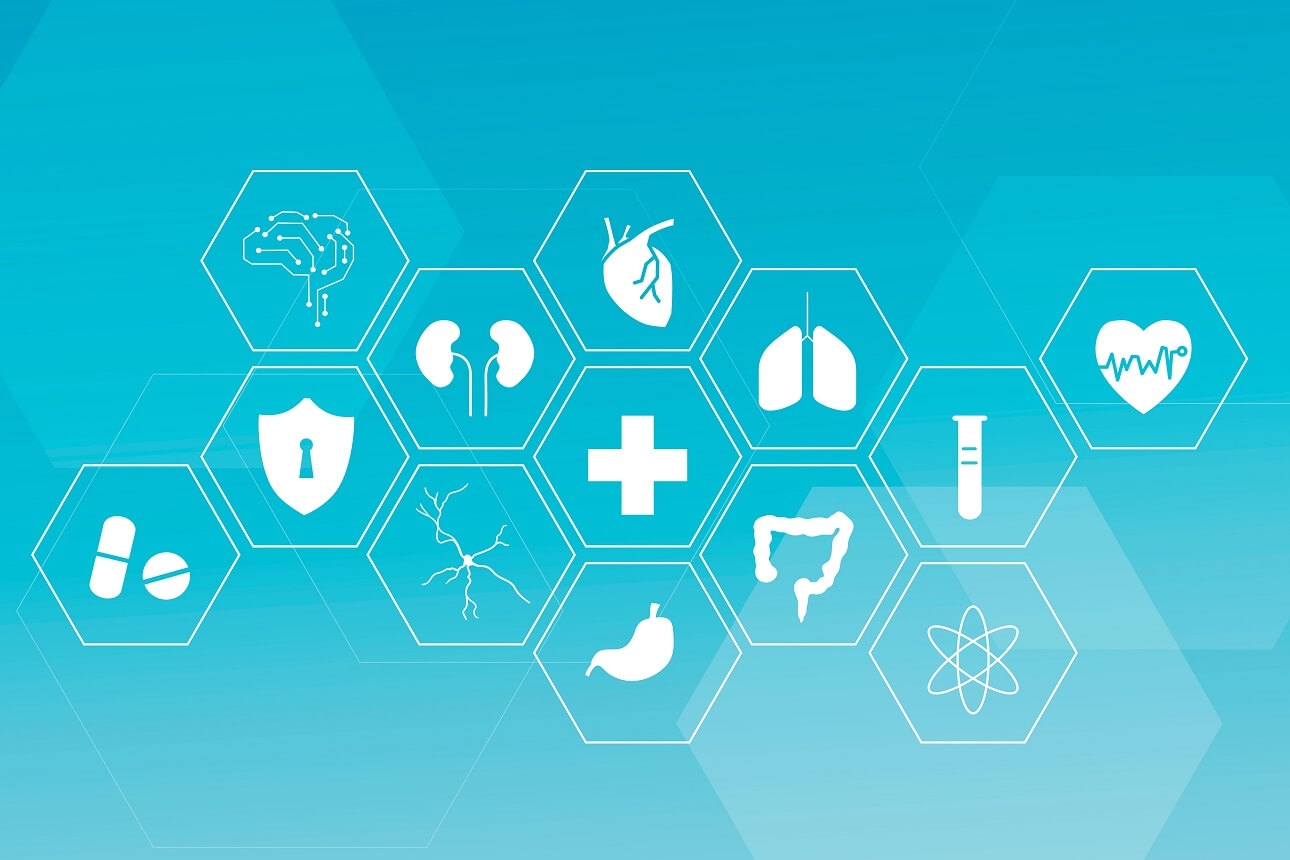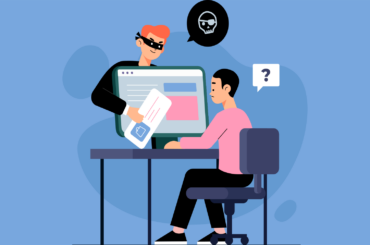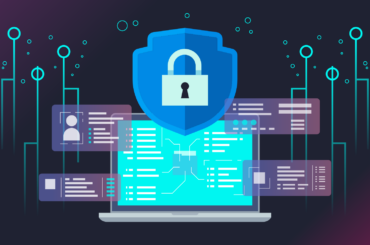Just like any other industry, the healthcare industry is also targeted by cybercriminals worldwide. Though the healthcare industry is not alone in facing cyber threats, the consequences could be worse than one can imagine. When there is a data breach or a cyber-attack, patient data can be stolen or even modified by cybercriminals. Attacks could result in modifying the test results of patients, diverting ambulances, delaying surgeries and treatments, and more, which could be life-threatening.
When it comes to healthcare, cybersecurity must be prioritized and hospitals have to take measures to protect sensitive patient data. Threats may not always come from outside the hospital but insiders could also be a reason behind cyber attacks. So it is important to be aware of the different kinds of threats targeting healthcare industries.
This article aims at giving you an overview of the ten most common healthcare cybersecurity threats and it also includes tips on improving cybersecurity efforts.
10 Cybersecurity Challenges Faced by the Healthcare Industry
1. Data Breaches
Data breaches are very common in the healthcare industry and such breaches are said to cost millions of dollars to the healthcare industry across the globe. With data breaches being one of the biggest challenges to this industry, it is important to focus on encryption so that the data of the patients do not get leaked. Likewise, healthcare software providers have to be HIPAA compliant. The Health Insurance Portability and Accountability Act (HIPAA) sets standards for data protection and also requires physicians to secure sensitive patient data stored electronically. Healthcare providers who fail to follow the regulations, in most cases, become victims of data breaches.
2. Malware and Ransomware
Ransomware attacks have quadrupled and several healthcare organizations have been hit by these attacks in recent years. These attacks are one of the most dangerous attacks affecting hospitals. In this type of attack, cyber criminals infect hospital systems with malware and make patient data inaccessible until the victim pays them the ransom they demanded. In most cases, cybercriminals use phishing emails or trojans to carry out this attack.
3. Insecure Medical Devices and Equipment
Vulnerabilities in medical equipment and devices could be exploited by cybercriminals to take complete control and carry out cyberattacks. Such attacks can alter the clinical performance of equipment, change test results, or make other changes that could be catastrophic. In most hospitals, connected hospital devices are used to treat patients. As most hospitals fail to understand the importance of granting secure access to their connected devices, cybercriminals take advantage of vulnerabilities and carry out major cyberattacks.
4. Insider Threats
In most cases, hospital employees themselves are behind certain cyberattacks. Unhappy insiders or contractors who have access to critical resources carry out cyberattacks by stealing sensitive patient data or they can misuse their access to disrupt the network. Insider threats have been increasing and in most cases, privileged employees are behind such attacks. Limiting privileged access is a must to avoid these attacks.
5. Vulnerability of Legacy Systems
Legacy systems are the ones that the manufacturers no longer support. Hospitals using outdated physical servers may not be able to get them fixed if there happens to be any damage to the server. It is mandatory to replace such legacy systems with new ones. Outdated systems will be vulnerable to cyber-attacks and they may not have protection from emerging threats and virus infections. In most cases, hospitals do not upgrade to new technology because of the cost involved but using legacy systems makes it easy for cybercriminals to take advantage of vulnerabilities and exploit them.
6. DDoS Attacks
Cybercriminals carry out Distributed Denial of Service (DDoS) attacks using bots and they flood websites with internet traffic and bring them down. Many hospitals are now being targeted by DDoS attacks. Attackers disrupt the overall performance of the website or the network by sending several requests on the server and make it unavailable.
7. Cloud Threats
Cloud threats are one of the emerging challenges for the healthcare industry. With more healthcare organizations adopting cloud solutions to store data, cybercriminals have also started to target cloud services in healthcare. They use tactics like brute force login attempts and phishing attacks and exploit weaknesses in the healthcare organization’s cloud security practices. Complying with the HIPAA rules is mandatory to stay away from cloud threats.
8. Lack of Documented Cybersecurity and Governance Policies
Setting up documented rules for cybersecurity should be made mandatory. Healthcare systems don’t tend to focus on cybersecurity and they fail to create solid documentation, as a result of which they become victims of cyberattacks. However, investing time on securing their sensitive data will help them keep their data secure and stay away from attacks online. It is recommended that they maintain documentation related to security policies and practices.
9. Phishing Attacks
This is where cybercriminals misguide users into revealing valuable details like medical records, usernames, passwords, etc. Phishing attacks are carried out using targeted communications, i.e. email, messaging, etc. Attackers send emails or messages with links to malicious websites and encourage the user to click on it. When the user clicks on the link, they may unknowingly end up downloading malware that paves way for the attacker to access sensitive data.
10. Lack of Cyber Awareness
Being aware of the potential threats is the best way to prevent cyberattacks. Healthcare organizations must create awareness among their employees about cybersecurity threats and help them understand the risks involved. Creating awareness will help employees understand the difference between a fake and a legit website. They may also be cautious while they download attachments. It is important for healthcare organizations to enforce advanced password policies so that employees do not create easy to guess passwords.
How to Improve Your Cybersecurity Efforts?
Now that we are aware of the ten challenges the healthcare industry faces, let’s learn how to improve cybersecurity efforts to prevent becoming a victim of attacks online.
1. Apply Patches and Security Updates
In most cases, cybercriminals take advantage of unpatched vulnerabilities in software and exploit them. It is a good practice to update software whenever there is an update and apply patches to operating systems. This way, healthcare organizations can close vulnerabilities. Patching known security vulnerabilities will help prevent healthcare organizations from becoming victims of cyberattacks. Cybercriminals scan the internet using search engines like Shodan to discover vulnerable networks and devices. This is how they identify systems that have patches to fix and exploit them.
2. Use Strong Passwords
Creating strong passwords that are around 15 characters long with a mixture of special characters, numbers, and letters must be made mandatory. This could be one of the first steps in the process of securing sensitive patient data. Strong passwords that cannot be easily guessed will help keep cybercriminals out and prevent data breaches. Lack of awareness results in employees not updating their passwords and many tend to use easy-to-guess passwords like their names or the names of their family members. Healthcare organizations must create awareness among employees and help them understand the importance of creating strong passwords.
3. Use Antivirus Software and Ensure that it Works
Anti-virus software will scan all the files you receive and keep malicious files at bay. Updated antivirus software is mandatory for securing your network and to ensure malicious files do not enter your network. However, having antivirus is not just sufficient and it has to be constantly updated to make sure your network is secure and protected against online threats.
4. Phishing Awareness
Phishing attacks are more common in the healthcare industry and cybercriminals carry out most cyberattacks by first sending phishing emails. Phishing emails are sent to gain access to sensitive patient data like medical records, user names, and more. Healthcare organizations can prevent themselves from falling prey to phishing attacks by educating their employees on how to identify and report phishing emails.
5. Control Physical and Network Access to Health Data
Patient data must not be made available to all employees in an organization and access has to be restricted to only authorized employees. It is important for healthcare organizations to adopt a zero-trust approach and make sure patient data is not readily available to all employees.
Conclusion
To bolster cybersecurity, healthcare organizations must start educating their employees about cybersecurity threats and make sure they are not clicking on malicious links or downloading malicious attachments. With the number of cyberattacks on healthcare organizations increasing, it is important to become more aware of the emerging threats in order to protect sensitive patient data. They have to develop policies to be prepared and to respond to threats effectively. Likewise, it is important to figure out where they are vulnerable to attacks and take steps to fix those vulnerabilities.





